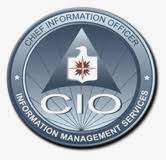- Information is everywhere in an organization
- Information is stored in databases
- Databases
- maintains information about various types of objects (inventory), events (transaction), people (employees), and place (warehouses)
- Databases models include :
- Hierarchical database model
- information is organized into a tree-like structure (using parent/child relationship) in such a way that it cannot have too many relationships.
- Network database model
- a flexible way of representing objects and their relationships
- Relational database model
- stores information in the form of logically related two-dimensional tables.
Entities and Attributes
- a person, place, things, transaction, or event about which information is stored.
- the row in each table contain the entities.

- characteristic or properties of an entity class.
- the columns in each table contain the attributes.
- for example :
Keys and Relationships
Primary keys and foreign keys identify the various entity classes (tables) in the database.
- primary key
- a field ( or group of fields ) that uniquely identifies a given entity in a table.
- foreign key
- a primary key of one table that appears an attribute in another table and acts to provide a logical relationship among the two tables.
Potential relational database for Coca-Cola
Database advantages from a business perspective include
- increased flexibility
- A well-designed database should :
- handle changes quickly and easily
- provide users with different views
- have only one physical view
- deals with the physical storage of information on a storage device. (hard disk)
- have multiple logical views
- focuses on how users logically access information
- increased scalability and performance
- A database must scale to meet increased demand, while maintaining acceptable performance levels
- scalability (refers to how well a system can adapt to increased demands)
- performance (measures how quickly a system performs a certain process or transaction)
- reduced information redundancy
- Databases reduce information redundancy
- redundancy (the duplication of information or storing the same information in multiple places.
- Inconsistency is one of the primary problems with redundant information
- difficult to decide which is most current and most accurate
- increased information integrity ( quality )
- Information integrity
- measures the quality of information
- Integrity constraint (rules that help ensure the quality of information)
- Relational integrity constraint (rule that enforces basic and fundamental information-based constraints). For example users cannot create an order for a nonexistent customer, provide a markup percentages that was negative etc.
- Business-critical integrity constraint (rule that enforce business rules vital to an organization's success and often require more insight and knowledge than relational integrity constraints). For example product returns are not accepted for fresh product 15days after purchase.
- increased information security
- Information is an organizational asset and must be protected.
- Database offer several security features including :
- password - provides authentication of the user
- access level - determines who has access to the different types of information
- access control - determines types of user access, such as read-only access.
Database Management Systems (DBMS)
- software through which users and application programs interact with a database
Data - Driven Web Site
- an interactive Web site kept constantly updated and relevant to the needs of its customers through the use of a database
Data - Driven Business Intelligence
- BI in a data - driven Web site
Integrating Information among Multiple Database
- integration (allows separate systems to communicate directly with each other
- forward integration
- takes information entered into a given system and sends it automatically to all downstream systems and processes.
- backward integration
- takes information entered into a given systems and sends it automatically to all upstream systems and processes.
- forward integration & backward integration







































